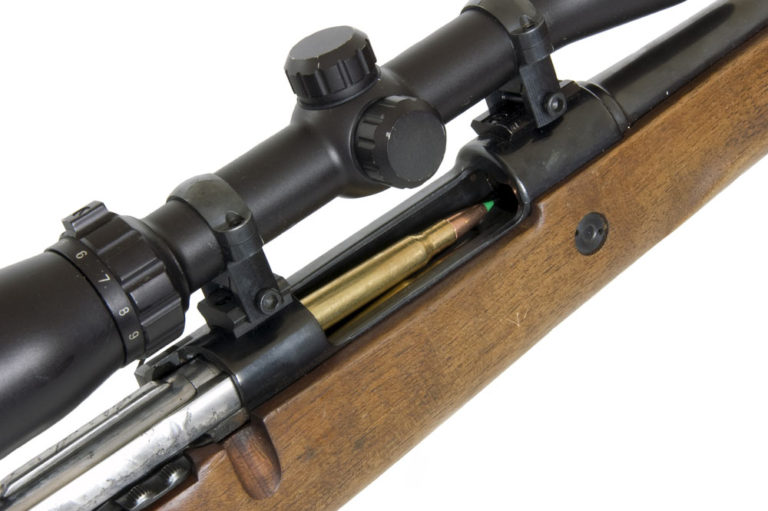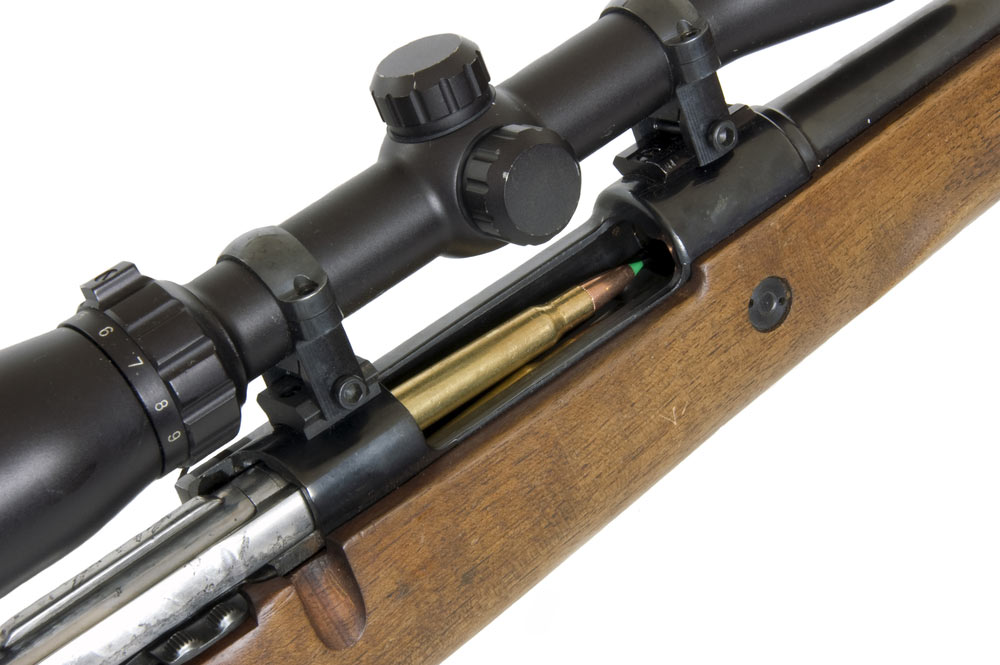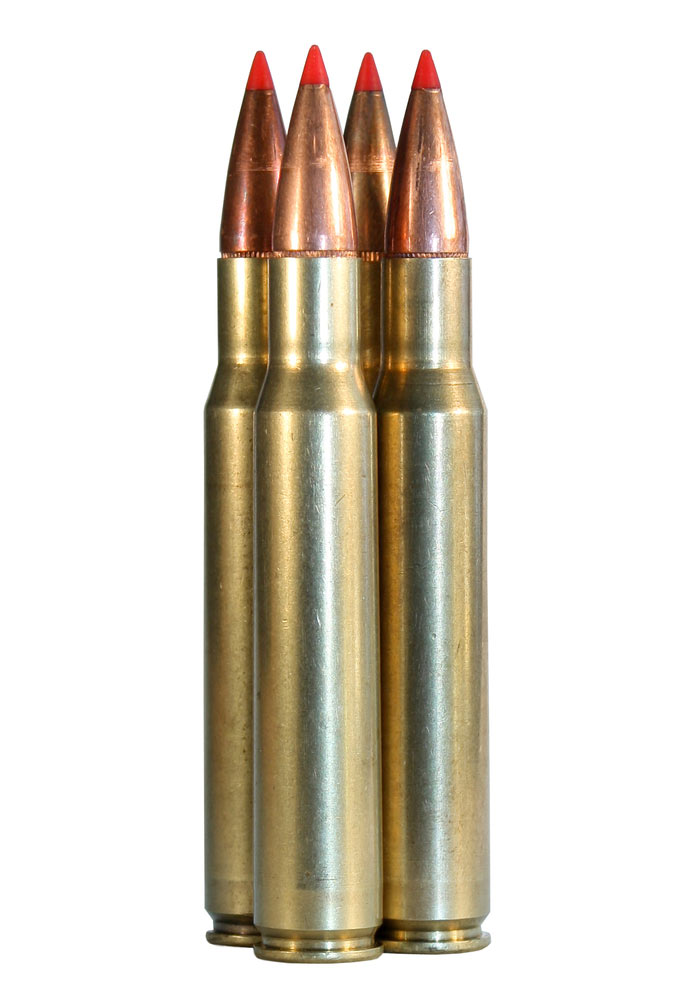

There is now, and has been since the Chinese invented gunpowder, a continuing debate seeking the mythical “best all-around cartridge.” One can make a really convincing argument for the .30-06 as that cartridge.
Excluding the elephant, Cape buffalo, rhino, hippo, and I might add lion of Africa, and, perhaps another animal or two from elsewhere, an accurate rifle using proper bullets in the old Springfield will get most any job done convincingly.
Fortunately, most of us do not have to make that kind of decision as we can select a cartridge that is essentially ideal for a particular animal being hunted. How this really splendid cartridge came about is an interesting story.
In 1898, the Spanish-American war broke out. While US power prevailed handily, it was not without some eye-opening experiences.
At the time, the standard military armament was the .30 Government (.30-40 Krag) and the 6mm Lee Navy. The Krag was loaded with a 220-grain round-nosed bullet with a velocity of 2000 fps, whereas the opposition were armed with Mauser rifles chambered for the 7×57 cartridge loaded with lighter weight spitzer bullets at a much faster velocity.
Both the 7×57 cartridge and the Mauser rifles that fired it proved to be far superior to the arms and ammunition carried by our soldiers. When that fracas was over, the military planners set about designing a new rifle and a new cartridge.
Most of Europe had rearmed with spitzer bullet designs when the military introduced the new Springfield rifle and the equally new .30-03 cartridge to accompany it in 1903. Unfortunately, the .30-03 service cartridge was loaded with the same 220-grain round-nose bullet as the Krag. They did increase the velocity to about 2300 fps, but it still fell well behind the European developments in performance.
The cartridge was then redesigned with a slightly shorter neck to accommodate a spitzer flat-based bullet weighing 150 grains and developing a muzzle velocity of around 2,700 fps. The Springfield rifles brought out for the .30-03 cartridge were modified to accept the new cartridge, designated the M1906 cartridge.
Several modifications were made to the loading of the cartridge from time to time and for various reasons. In 1938, the M2 Ball cartridge, loaded with a 151 grain, flat base bullet and delivering a minimum of 2,740 fps velocity, became the standard issue ammunition for military rifles and .30 caliber machine guns until the cartridge was replaced by the 7.62×51(.308) NATO service round.
It didn't take long before the US commercial rifle and ammunition manufacturers began producing both rifles and ammo for the new military cartridge, and, as the old saying goes, “the rest is history.”
In its long history, it has been loaded in about every bullet weight available in .30 caliber. The lightest bullet weight that I've seen commercially loaded was the 110-grain bullet, and the heaviest, the 220-grain bullet. I've heard of lighter than 110-grain and heavier than 220-grain bullets loaded in custom ammo, however.
A quick look in the ammo section of the 2014 68th edition of Gun Digest reflects ammo available loaded with bullets weighing 55, 125, 150, 152, 165, 168, 170, 178, 180, and 220 grains. If that doesn't cover the waterfront, I don't know what would.
Personally, I don't subscribe to the one-gun fits all theory anyway. I suspect the .30-06 is probably as close as it gets to fitting that one gun does all requirements, but it is still a compromise on the upper and lower ends of the spectrum.

Even so, dead is dead and there are ample examples to prove it will work in the right hands and with the proper bullets. A friend of mine killed a Cape buffalo too dead to bellow using a .30-06. He had to get special permission from the game department to do so. A bum shoulder followed by less than 100% successful surgery limited the amount of recoil he could tolerate. The .30-06 was his limit.
Also, the late Jack O'Connor's lovely wife Eleanor brained an elephant too dead to wiggle with a single .30-06 round. The late Hosea Sarber, an Alaskan Game and Fish Agent and well-known guide for those huge Alaskan brown bears, used a .30-06 as his back-up rifle for his clients after the big bruins.
Still, as the late outdoor writer, guide, and who knows what else Bob Hagel wrote – or at least it is attributed to him – that one should not carry a rifle that works well when everything goes right, but, rather one that will carry the day when everything goes wrong, or words to that effect. There is merit to that argument.
I have two rifles in my safe chambered for the .30-06 cartridge. One of them is a lovely custom Model 70 stocked by Gary Goudy. I have had it to Africa twice, once in Tanzania where I took a zebra, East African impala, and a Grant's gazelle, and as my only rifle in Namibia where I took a mountain zebra, gemsbok, springbok, and a huge eland.
In Tanzania I used 165-grain Barnes TSX bullets and in Namibia, due to the eland on the menu, I used 180-grain Norma Oryx bullets. It worked just fine, and I expected no less.
An added bonus to using a .30-06 is that I have never been in a business that sold ammunition in any form, that didn't have .30-06 fodder in stock.

Next Step: Get your FREE Printable Target Pack
Enhance your shooting precision with our 62 MOA Targets, perfect for rifles and handguns. Crafted in collaboration with Storm Tactical for accuracy and versatility.
Subscribe to the Gun Digest email newsletter and get your downloadable target pack sent straight to your inbox. Stay updated with the latest firearms info in the industry.

![Best Concealed Carry Guns In 2025 [Field Tested] Wilson Combat EDC X9S 1](https://gundigest.com/wp-content/uploads/Wilson-Combat-EDC-X9S-1-324x160.jpg)


![Best 9mm Carbine: Affordable PCCs [Tested] Ruger Carbine Shooting](https://gundigest.com/wp-content/uploads/Ruger-Carbine-Shooting-100x70.jpg)
![Best AR-15: Top Options Available Today [Field Tested] Harrington and Richardson PSA XM177E2 feature](https://gundigest.com/wp-content/uploads/Harrington-and-Richardson-PSA-XM177E2-feature-100x70.jpg)

.30-06 is one of the most excellent cartridge I’ve use in my life. It was a great experience. I used Vortex Diamondback HP 4-16x42mm scope with it. Its an excellent 3006 scopes. A combination of good scopes and rifle is most important for a successful shooting or hunting.